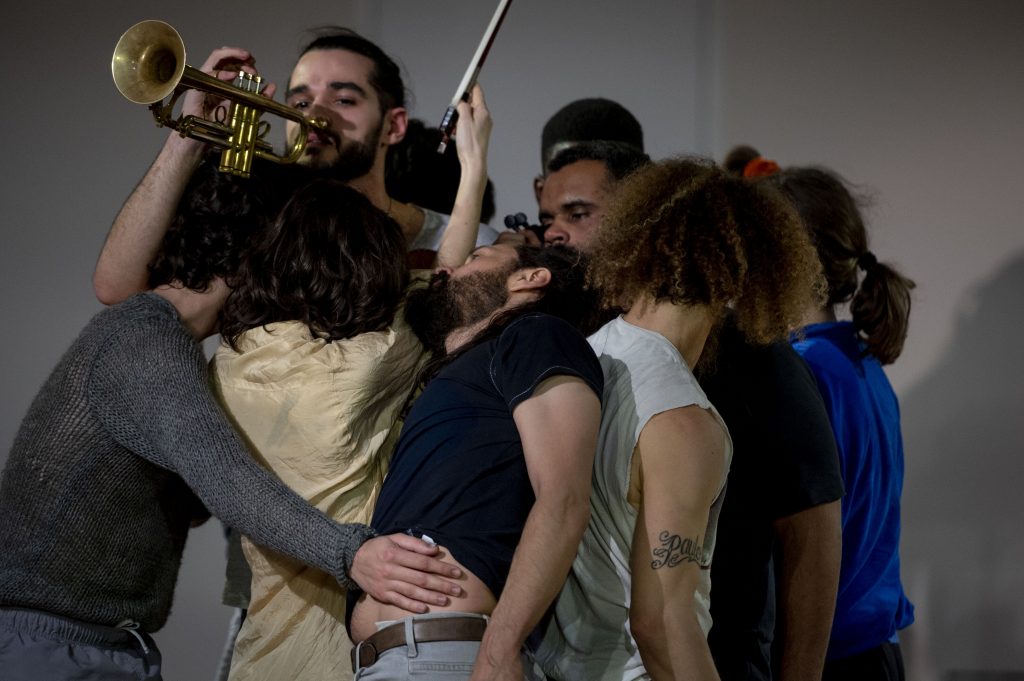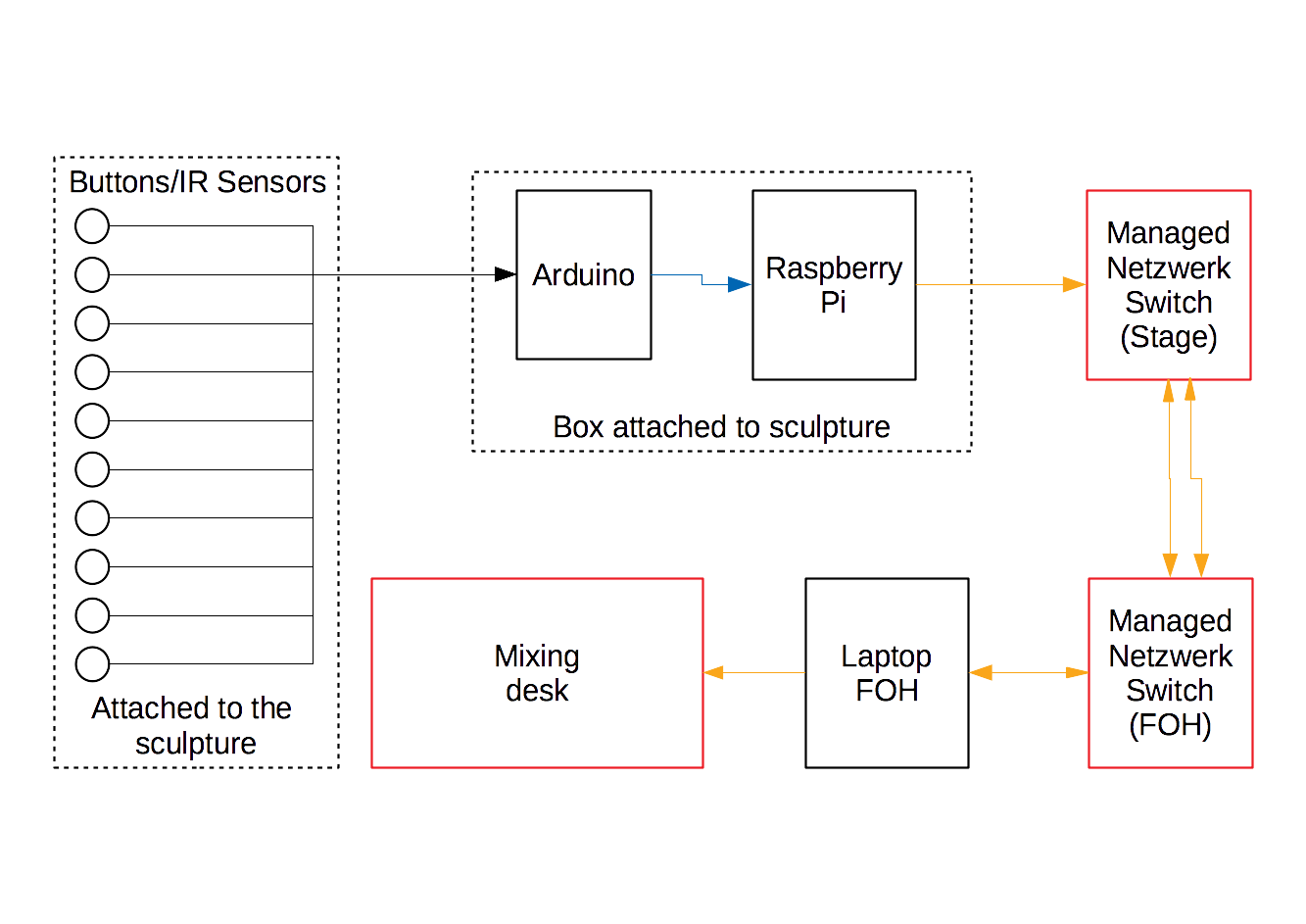bureau for
music technology
Archpiel
Who
Künstlerische Leitung, Konzept, Komposition: Brigitta Muntendorf
Künstlerische Leitung, Konzept, Choreografie: Stephanie Thiersch
Architektur: Sou Fujimoto
Dramaturgie: Stawrula Panagiotaki, Juliane Votteler
Musikalische Leitung: Mariano Chiacchiarini
Lichtdesign: Begoña Garcia Navas
Klangregie: Sebastian Schottke
Live-Elektronik / Programmierung: Maximiliano Estudies - OMSLO
Kostüme: Sita Messer, Lauren Steel
Choreografische Assistenz: Marcela Ruíz Quintero, Viviana Escalé,
Produktionsleitung: Harriet Lesch, littlebit GbR
Produktion: Sarah Heinrich
Technische Leitung: Gerhard Pichler
Bühnenkonstruktion: Studio Hamburg
Nils Kohler, Klarinetten
Carola Schaal, Klarinetten
Pablo Giw, Trompete
Till Künkler, Posaune
Małgorzata Walentynowicz, Synthesizer
Yuka Ohta, Perkussion
Jonathan Shapiro, Perkussion
Joss Turnbull, Perkussion
Moritz Baerens, Kontrabass
Asasello Quartett:
Rostislav Kozhevnikov, 1. Violine
Barbara Streil, 2. Violine
Teemu Myöhänen, Cello
Justyna Śliwa, Viola
Det Norske Solistkor / The Norwegian Soloists’ Choir
Probenleitung Chor: Yuval Weinberg
MOUVOIR:Fabien Almakiewicz
Neus Barcons Roca
Alexis „Maca“ Fernández
Julien Ferranti
Kelvin Kilonzo
Gyung Moo Kim
Margaux Marielle-Tréhoüart
Alexandra Naudet
Camille Revol
Joel Suárez Gómez
When and where
10.11.2017 Kunst-Station - Sankt Peter - Cologne
About the work
Architecture, dance and music enter an entirely new alliance as a sculpture created by the Japanese architect Sou Fujimoto is on the one hand a landscape on the other it is able to produce sound as a result of the cast dancing on it. The choreography by Stephanie Thiersch and the music by Brigitta Muntendorf generate a universe in which genres mingle and become blurred: Sound is produced by movement, by touch and space, by moods and silence. We find ourselves on an archipelago of possibilities, searching for new forms of composition and communication: looking for understanding that goes beyond language and signs, further than expressions and gestures. It will be a journey towards a “togetherness”, embarking on a quest towards ancient and organic processes of understanding that challenge our powers of perception. We are all connected by links and playing, we are all searching for a different way of dealing with ourselves and with the world. The audience are also passengers on this journey.
Setup
The Live-Electronics system is comprised by a couple of independent systems. A set of ten contact microphones (AKG C411) fixed in the wood platforms, tubes and metal plates are used both to amplify the natural sound of the material and as an amplitude sensor to trigger sounds when a certain amplitude is reached. Hidden into the structure is a set of small buttons to allow the performers to trigger events discreetly. Also a set of infrared sensors are built into the structure to send signals by just walking by them.
The transfer of the sensor’s signals to the front of house (where the mixing desk and the main computers are placed) was a design challenge. The stage set has a very clean aesthetic and very little place to hide equipment, so placing a full laptop there was not an option. I decided to use an Arduino Mega to read all the inputs and transfer them via USB to a RaspberryPi computer. A Python script in the Pi reads the serial input and sends the information as a TCP package over an UTP cable with the standard RJ45 connector to the computer in the FOH. The whole setup was placed inside of a box with input sockets to easily (un)plug the sensors.
Both main computers run Puredata, but for different purposes. One used the patch to translate the network packages into MIDI information, and then send MIDI notes over an internal interface to Ableton Live to produce sound. The second computer used the contact microphone’s inputs to trigger synthesized sounds when a threshold was reached.
Because both computers where using the Dante Virtual Soundcard and the mixing desk/sagebox system speak Dante (Audio-over-IP protocol) natively, no other hardware is needed to input the sound into the mixing desk.

